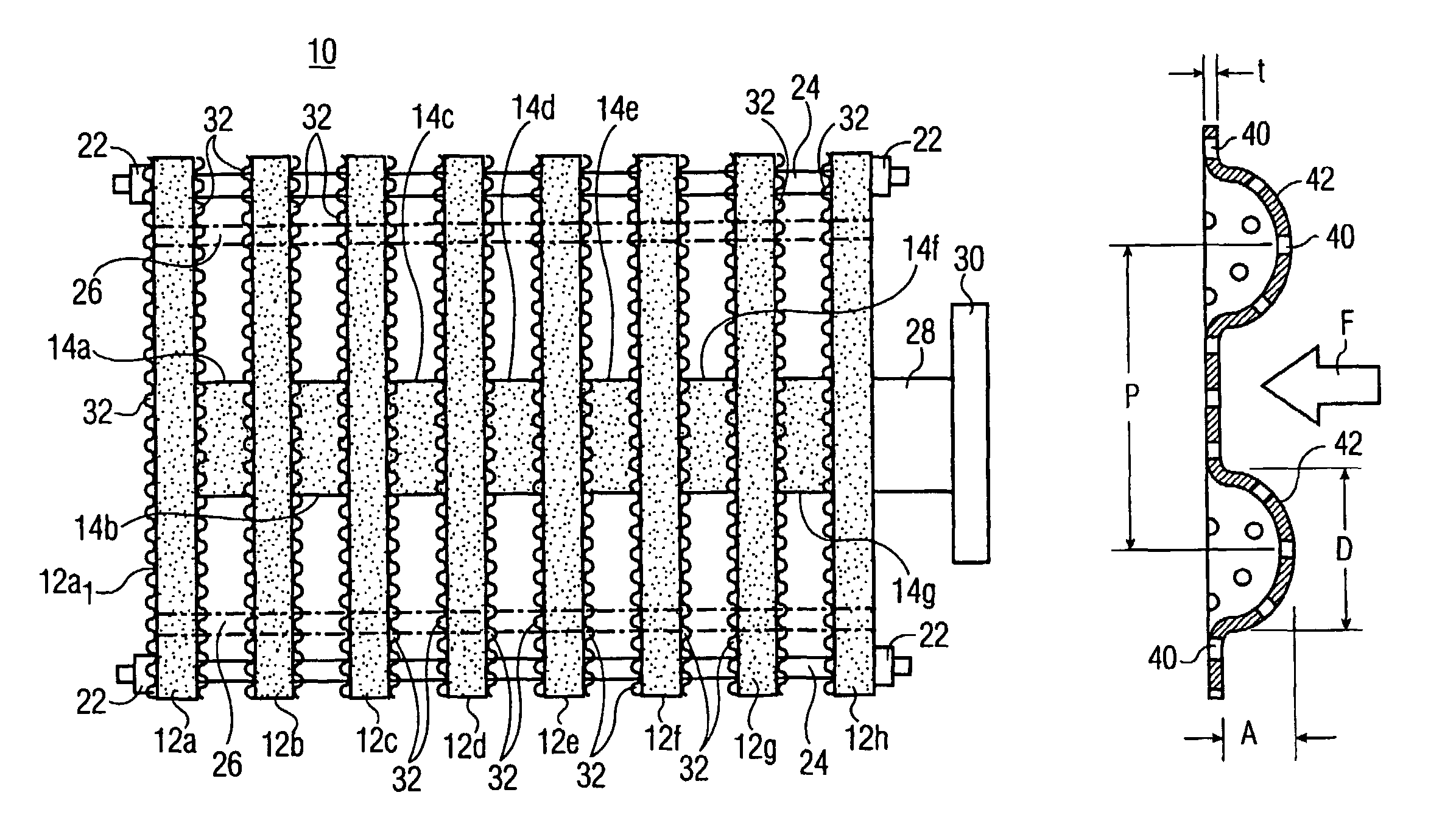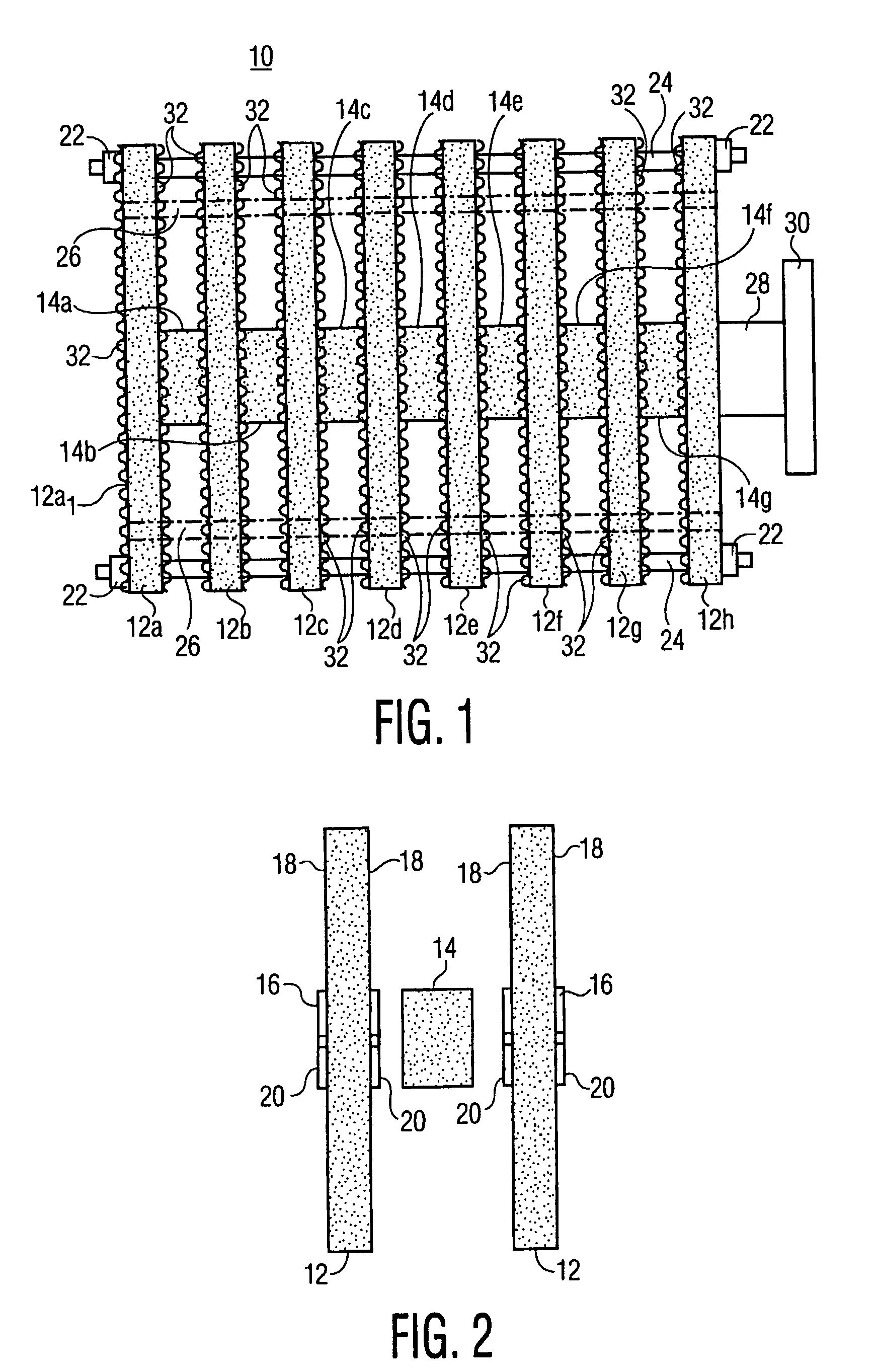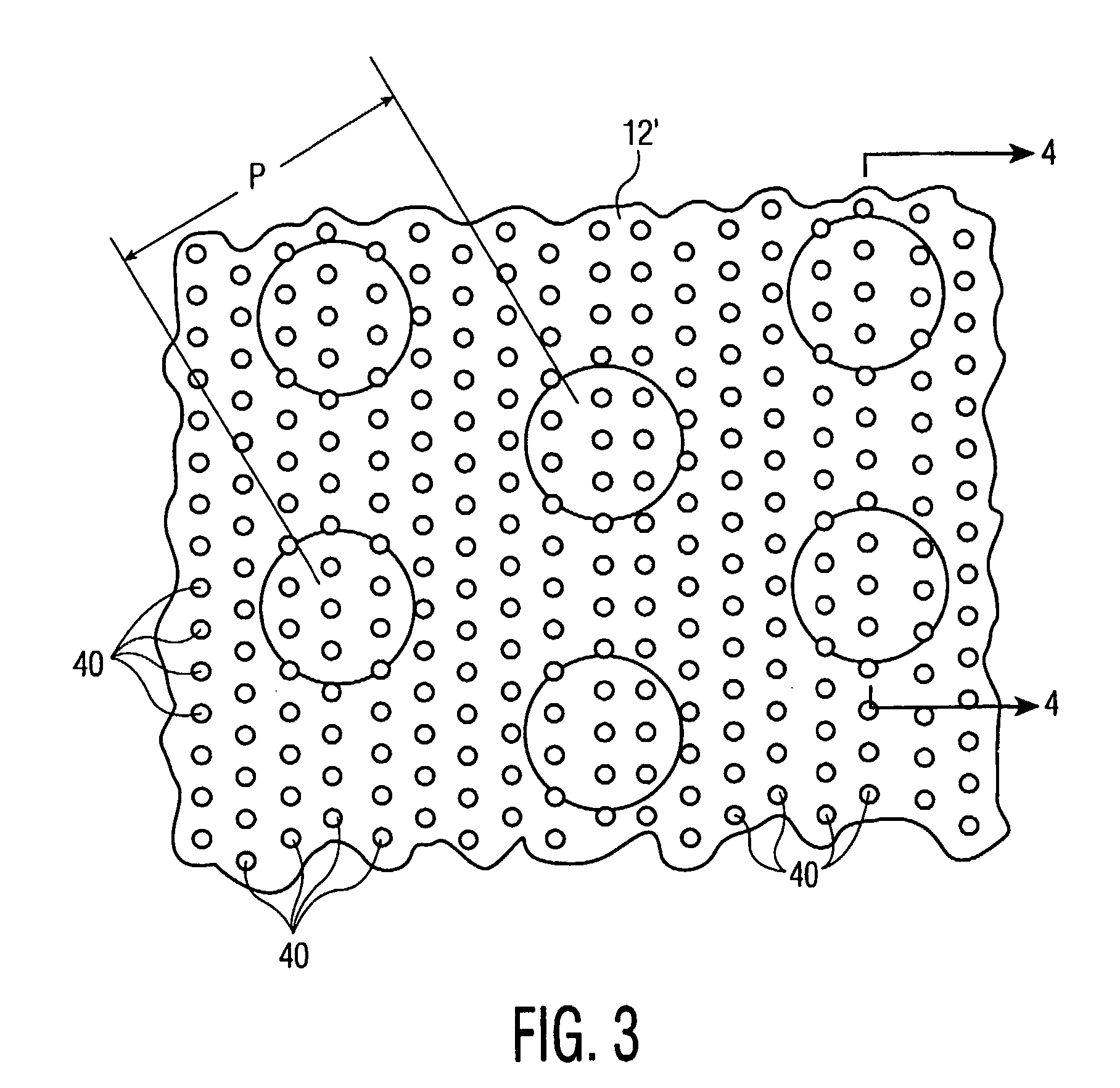Low head loss modular suction strainer with contoured surfaces
a modular construction and suction strainer technology, applied in the direction of separation processes, nuclear elements, filtration separation, etc., can solve the problems of large amounts of fibrous material entering the circulating coolant water, damage to the eccs pump, and difficulty in adjusting the design of the strainer
- Summary
- Abstract
- Description
- Claims
- Application Information
AI Technical Summary
Benefits of technology
Problems solved by technology
Method used
Image
Examples
working example
[0043]FIG. 8 schematically illustrates a test set up 200 that validates the concepts underlying the contoured strainer surface aspect of the present invention, and suggests a test protocol for determining the parameters of a contoured surface in accordance with the present invention for a given reactor application. A tank 202 simulates a reactor coolant reservoir. In the tests, materials simulating the debris encountered in a LOCA were introduced into the tank 202. An electrically powered propeller functions as a stirrer 204 to maintain the test debris in suspension in the test liquid in the tank 202. A pump array 206, simulating a reactor ECCS pump, draws water through a test strainer rig TS and circulates it back to the tank 202 through an adjustable control valve 208 that enables regulation of the fluid flow rate. The control valve outlet is introduced into a generally cylindrical baffle 209 at the bottom of the tank to inhibit the establishment of a flow pattern between the valv...
PUM
| Property | Measurement | Unit |
|---|---|---|
| thick | aaaaa | aaaaa |
| diameter | aaaaa | aaaaa |
| mass ratio | aaaaa | aaaaa |
Abstract
Description
Claims
Application Information
 Login to View More
Login to View More - R&D
- Intellectual Property
- Life Sciences
- Materials
- Tech Scout
- Unparalleled Data Quality
- Higher Quality Content
- 60% Fewer Hallucinations
Browse by: Latest US Patents, China's latest patents, Technical Efficacy Thesaurus, Application Domain, Technology Topic, Popular Technical Reports.
© 2025 PatSnap. All rights reserved.Legal|Privacy policy|Modern Slavery Act Transparency Statement|Sitemap|About US| Contact US: help@patsnap.com



